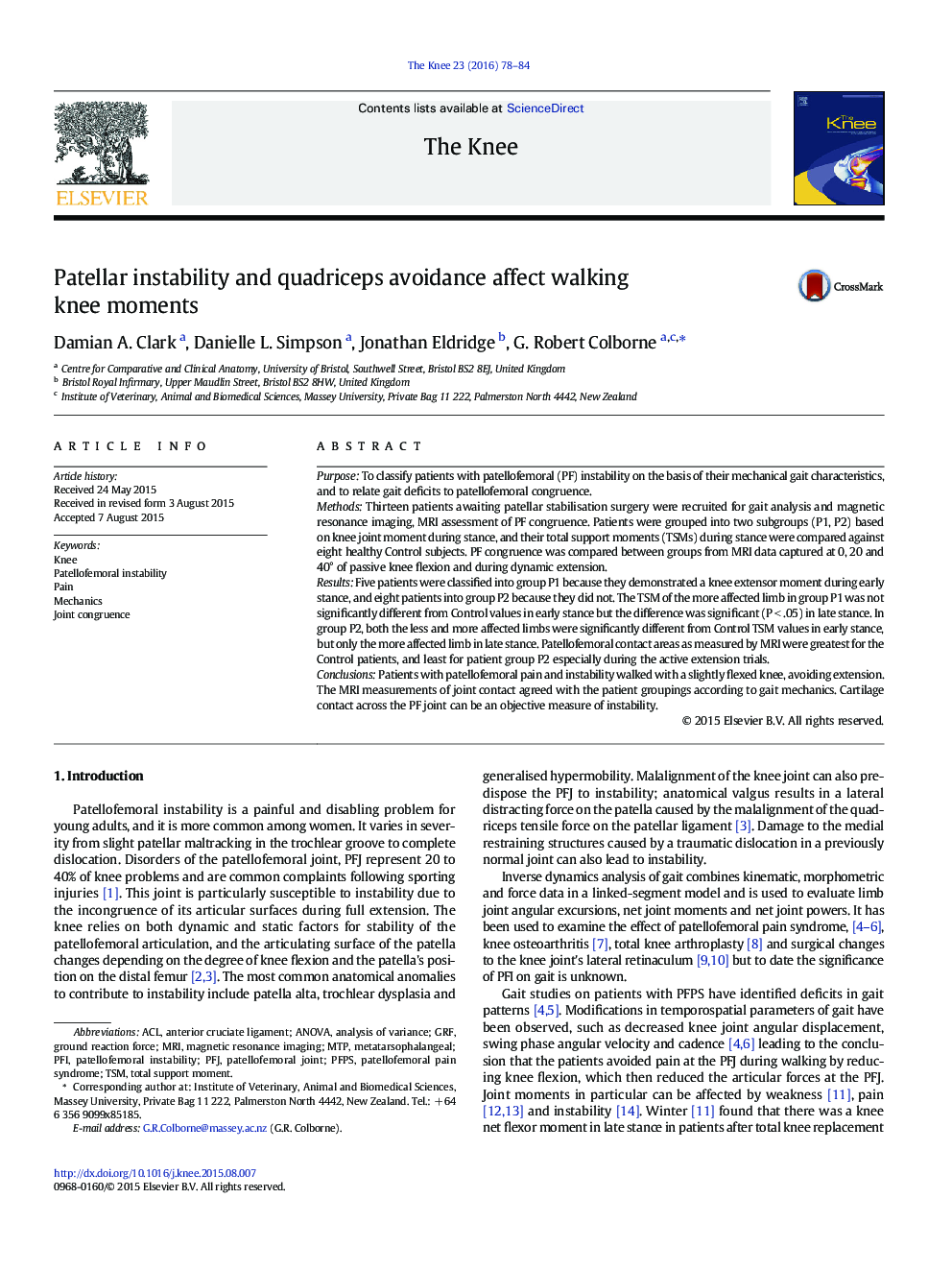| کد مقاله | کد نشریه | سال انتشار | مقاله انگلیسی | نسخه تمام متن |
|---|---|---|---|---|
| 4077194 | 1267206 | 2016 | 7 صفحه PDF | دانلود رایگان |
• Patients with PF instability have smaller PF contact areas compared to Controls.
• Patients with mild PF instability had near-normal knee extensor moments in stance.
• Patients with more severe PF instability had no knee extensor moments in stance.
• PF contact area from MRI was different between patient groups and normal Controls.
PurposeTo classify patients with patellofemoral (PF) instability on the basis of their mechanical gait characteristics, and to relate gait deficits to patellofemoral congruence.MethodsThirteen patients awaiting patellar stabilisation surgery were recruited for gait analysis and magnetic resonance imaging, MRI assessment of PF congruence. Patients were grouped into two subgroups (P1, P2) based on knee joint moment during stance, and their total support moments (TSMs) during stance were compared against eight healthy Control subjects. PF congruence was compared between groups from MRI data captured at 0, 20 and 40° of passive knee flexion and during dynamic extension.ResultsFive patients were classified into group P1 because they demonstrated a knee extensor moment during early stance, and eight patients into group P2 because they did not. The TSM of the more affected limb in group P1 was not significantly different from Control values in early stance but the difference was significant (P < .05) in late stance. In group P2, both the less and more affected limbs were significantly different from Control TSM values in early stance, but only the more affected limb in late stance. Patellofemoral contact areas as measured by MRI were greatest for the Control patients, and least for patient group P2 especially during the active extension trials.ConclusionsPatients with patellofemoral pain and instability walked with a slightly flexed knee, avoiding extension. The MRI measurements of joint contact agreed with the patient groupings according to gait mechanics. Cartilage contact across the PF joint can be an objective measure of instability.
Journal: The Knee - Volume 23, Issue 1, January 2016, Pages 78–84
